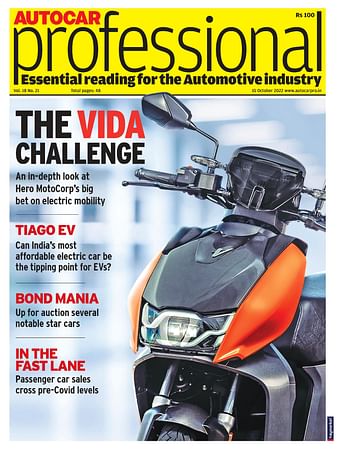Byton’s M-Byte SUV to feature 3D time-of-flight sensors
The time of flight sensors from pmdtechnologies will be used for in-car gesture control in Byton’s first production model, the M-Byte SUV.
Byton, the premium intelligent electric vehicle brand from China, and pmdtechnologies, a German-based semiconductor and a digital 3D imaging solution provider are going to incorporate the latter’s 3D time-of-flight for the in-car gesture control camera system operating the 48-inch Shared Experience Display (SED) in Byton’s first production model, the M-Byte SUV.
Positioned as the next generation smart device, Byton’s product line integrates advanced digital technologies to offer customers a smart, safe, comfortable, and eco-friendly driving and mobility experience. The M-Byte is the first vehicle from Byton, a mid-sized electric SUV that will start production in late 2019 with a design and technology platform that reflects the company’s global footprint.
“As cars get more and more functions, natural interactions are becoming an important tool to simplify the human-machine interface. Byton is one of the most innovative players in the field, so the partnership is exciting for pmd as we can showcase the potential of our unique 3D approach including full sunlight, which is difficult for other 3D technologies,” said Dr Bernd Buxbaum, CEO of pmdtechnologies.
pmdtechnologies’s 3D Time-of-Flight (ToF) sensors have been jointly developed with Infineon Technologies and are already used in smartphones, robots, VR/AR headsets and now automobiles. In Byton’s M-Byte, ToF sensors enable a car passenger to use a hand gesture to answer a smartphone or to turn on their favourite music via the SED.
The pmd 3D ToF sensor has a set of illuminators at the top of M-Byte’s Camera, which continuously emits invisible light into the car cockpit. The ToF sensor measures the time it takes for the camera light to bounce back from objects and persons, whether they are stationary or moving enabling the in-car gesture control camera system.
RELATED ARTICLES
Sept 2024 From R&D incentives to EV infrastructure: What auto components industry expects from Budget 2024
Sept 2024 From R&D incentives to EV infrastructure: What auto components industry expects from Budget 2024
US car majors hit the brakes on driverless cars
Ford Motor and Volkswagen to close self-driving startup Argo AI, due to lack of technology and clear regulations.
Autoliv and Geely to develop advanced safety tech for future vehicles
Scope of cooperation includes safety for high-level autonomous driving, intelligent steering wheel technology, a 360deg ...







 By Autocar Pro News Desk
By Autocar Pro News Desk
 26 Feb 2019
26 Feb 2019
 6881 Views
6881 Views










